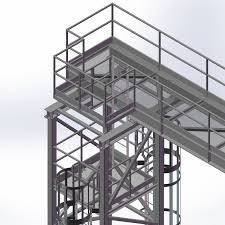Unlocking Efficiency and Accuracy in Building Design with BIM Services
In today's fast-paced construction industry, efficiency and accuracy are paramount. As building designs become more complex and the demands for sustainable, cost-effective projects grow, the need for advanced tools and technologies has never been greater. One such game-changer is Building Information Modeling (BIM). BIM services are transforming how architects, engineers, and contractors approach building design and construction, offering a wealth of benefits that not only streamline processes but also enhance project outcomes. In this blog, we’ll explore how BIM services unlock efficiency and accuracy in building design.
- What is BIM?
Building Information Modeling (BIM) is a digital representation of the physical and functional characteristics of a building. Rather than relying on traditional 2D drawings, BIM allows for the creation of 3D models that encompass detailed information about every aspect of a structure, from its materials and dimensions to its energy efficiency and sustainability features. This shared, dynamic model is accessible to all stakeholders involved in the project, promoting seamless collaboration and reducing errors from the outset.
- How BIM Enhances Efficiency
Faster Design and Planning Traditional building design involves multiple drafts, revisions, and manual adjustments, which can be time-consuming. With BIM, architects and engineers can create detailed, accurate 3D models from the very start. This eliminates the need for time-consuming back-and-forths and provides a more efficient means of refining the design. Modifications can be made in real-time, allowing for quicker decision-making and faster project initiation.
Improved Collaboration Across Teams One of the key advantages of BIM services is the ability to foster collaboration. Since the model is accessible by all project stakeholders—including architects, engineers, contractors, and owners—there is no need for everyone to work from separate sets of data. Everyone has access to the same updated version of the project, minimizing miscommunication and ensuring that all team members are on the same page. This collaborative approach drastically reduces delays and ensures the project stays on track.
Better Resource Management BIM services provide in-depth information about materials, quantities, and resource requirements. This allows project managers to more accurately estimate costs, avoid material waste, and optimize resource allocation. By identifying potential issues before construction begins, BIM helps to reduce costly on-site errors, contributing to smoother project execution and improved overall efficiency.
Reduced Rework and Change Orders With traditional methods, design mistakes or changes can lead to costly rework during the construction phase. BIM helps prevent this by detecting clashes and discrepancies in the design early on. For example, if an electrical system interferes with a structural element, BIM’s clash detection tools flag these issues, allowing for adjustments before any physical work begins. This proactive approach helps avoid costly delays and ensures the design can be executed exactly as planned.
- How BIM Ensures Accuracy
Minimizing Design Errors One of the biggest challenges in construction is ensuring that designs are free from errors. With BIM services, architects and engineers can model every aspect of a building in 3D, which significantly reduces the chances of oversight. The digital model allows them to spot inconsistencies, clashes, and design flaws before they become issues in the physical world. By preventing these errors at the design stage, BIM ensures that the construction process is more accurate and smoother.
Precise Data for Better Decision-Making BIM’s ability to store vast amounts of detailed data means that all stakeholders have access to accurate and reliable information at every stage of the project. From material specifications to energy performance details, this data provides a clear understanding of how the building will perform and allows for informed decision-making. By using this data, architects and engineers can make design choices that optimize performance, cost, and sustainability.
Enhanced Building Lifecycle Management BIM isn’t just about the design phase; it also plays a crucial role in managing the entire lifecycle of a building. The information embedded in a BIM model can be used long after construction is complete for maintenance, renovation, and operation. Facility managers can access accurate as-built data to optimize energy use, plan repairs, and even manage the replacement of building components over time. This long-term accuracy ensures the building remains efficient and functional throughout its life.
Improved Quality Control BIM enables better quality control by allowing for thorough review and validation before construction begins. By simulating the building process virtually, the team can identify potential construction issues or conflicts and address them beforehand. This virtual walkthrough also helps detect design flaws, such as structural weaknesses or energy inefficiencies, that might not be immediately obvious in traditional 2D plans. The result is a more accurate and high-quality finished building.
Conclusion
As the demand for smarter, more sustainable, and efficient buildings grows, the role of BIM services has become more crucial than ever. By unlocking efficiency and accuracy in the design and construction process, BIM helps streamline workflows, reduce costs, and ensure that projects are completed on time and to the highest standards. As the construction industry continues to evolve, adopting BIM services is no longer just a trend—it’s becoming a necessity for success.
The integration of BIM into the building design process allows for better collaboration, reduced errors, and more precise execution, ultimately leading to smarter, more efficient, and cost-effective construction projects. Embracing BIM technology will undoubtedly continue to shape the future of building design and construction, unlocking new levels of accuracy, efficiency, and innovation.




Comments
Post a Comment